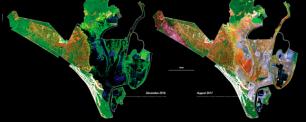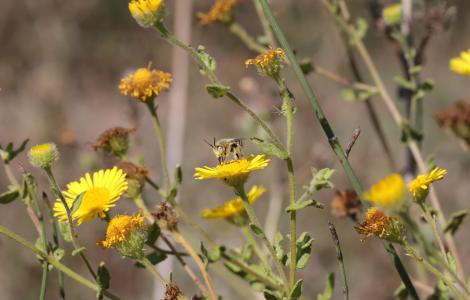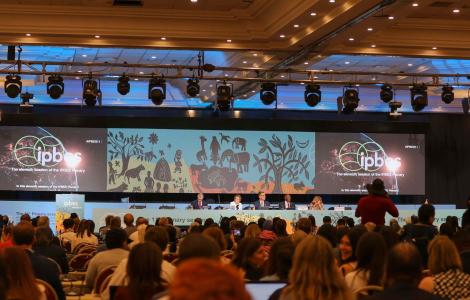Earth observation can help conserve protected natural areas

To celebrate passing its halfway point, the European project ECOPOTENTIAL is organizing a photo exhibition and a workshop that will generate awareness of innovations in the field of remote sensing which can be applied to the management, monitoring and conservation of protected natural areas.

ECOPOTENTIAL, a European project in which CREAF is a partner, is aiming to show that satellites, drones and sensors capable of continuously recording environmental data from remote positions can be extremely helpful for conserving protected natural areas, and is looking to promote their use to that end. To celebrate having passed its halfway point in 2017, the project is organizing three days of activities in Brussels in January 2018, including a workshop, a photo exhibition and a book presentation. The intention is to meet with members of the European Parliament and representatives of other institutions with a key role in the field of remote sensing and the conservation of natural areas, so as to make them aware of the project and its achievements.
“In the project, we provide those responsible for protected areas with large amounts of information that has been obtained via satellite and processed to make it easily interpretable and useful for their management work”, explains CREAF researcher Cristina Domingo.
Entitled “SPACED: Using Earth Observations to Protect Natural Landscapes”, the workshop will be held in the Espai Catalunya Europa on Wednesday 10 January and will be open to the public. Throughout the day, attendees will be able to find out about innovations in remote sensing technology which can be applied to the management, monitoring and conservation of protected natural areas. The first part of the workshop will focus on the current projects of the Earth observation arena's leading European players, with contributions from the European Space Agency, the Group on Earth Observations (GEO) and the European Commission. The second part will feature reports on how major European and global initiatives are making use of remote sensing to manage biodiversity and ecosystem services, with presentations from the Long Term Ecological Research Network, LifeWatch, the GEO Biodiversity Observation Network and the Satellite-based Wetland Observation Service. The third part will be ECOPOTENTIAL's moment in the spotlight, with four of the project's partners presenting its most important results to date and its plans for the future. The workshop will finish with an open discussion about using remote sensing to protect ecosystems and the environment.
The photo exhibition and the book that complements it, meanwhile, will showcase the 25 sites in Europe and beyond being studied as part of the project. In each of these protected natural areas at least one issue is being managed using methodologies transferred from ECOPOTENTIAL, all of which include remote sensing.
Satellites are being used to improve the management of Doñana, La Palma and the Sierra Nevada, ECOPOTENTIAL's three Spanish sites
In the case of Doñana National Park, ECOPOTENTIAL is combining traditional bird monitoring data with satellite data to learn more about how the presence of certain species of birds is connected to the characteristics of the park's marshes.
Thanks to the project, maps that measure variation in the flooding of the marshes in the year's different seasons are being made. From year to year, it will be possible to compare them with maps that show the presence (or absence) of particular bird species in order to determine how the two phenomena are related. Additionally, satellite images, once correctly interpreted, are being used in conjunction with knowledge and data obtained in the field to manage and help conserve endangered bird species in the park.
Where the island of La Palma is concerned, the project involves the use of satellite images to study the intensity and severity of forest fires and gauge their impact on ecosystem health. The results of this work are shared with local administrators and used to train them during field trips.
In the Sierra Nevada mountain range, ECOPOTENTIAL is supporting the Life Adaptamed project that the Sierra Nevada Global Change Observatory is coordinating. The project in question is aimed at using a 19th-century irrigation channel system to improve the distribution of the water that runs down from the mountains, with a view to helping mitigate the effects of global change. Satellite images are being used to track the measure's evolution, gauge its positive impact on the environment and improve its implementation.
The products developed by around 25 ECOPOTENTIAL partners for the 25 protected natural areas can be viewed here. Using MiraMon technology, CREAF has developed the map browser in its entirety.
Work geared to the management of processionaries is also being carried out in the Sierra Nevada, including research to identify the level of infestation as of which satellite data could be used to monitor the caterpillars.
(1) ECOPOTENTIAL has received funding from the European Union under grant agreement no. 641762.
(2) The opinions reflected in this report are those of its author. The European Commission is not responsible for any use made of the information contained herein
Related news

The first report on the conservation status of wild pollinators in Catalonia is presented

IPBES publishes two reports to transform the way we engage with nature, conserve it and survive



